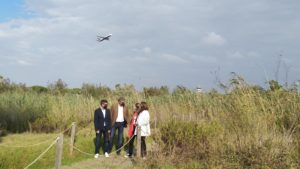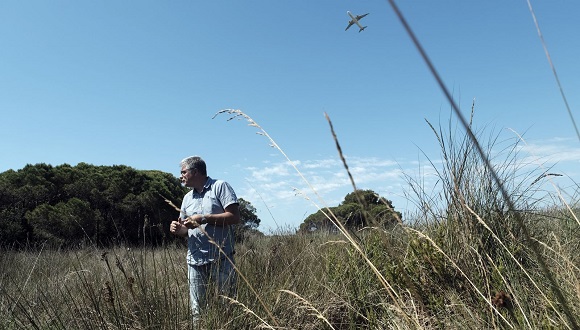“Ecosystems are like a plane and we take them out of pieces that can make them fall. It could be that Ricarda was one of the last screws in the Delta.”
Joan Pino, co-director of the LET, professor of ecology at the UAB and director of CREAF, reflects on the natural space of la Ricarda and the effects of the expansion of El Prat airport: “if the Llobregat delta If it were a plane, Ricarda would be a very important part of it –who knows if the last one– that supports the complex operation of the Delta. An impossible space to remove without shaking the rest of the ecosystem and the environmental services it provides to the entire population.”

Ecosystems are made up of several pieces and stop working as they are lost. Precisely, Ricarda is this for the Llobregat delta. “Delta habitats are becoming increasingly fragmented and this is causing all the functioning of the Delta to begin to falter. We have to imagine that ecosystems are like a plane and our alteration of them is taking the screws out of that plane. If we remove the last screw it ends up falling. In fact, this is the story we’ve seen recently in other aquatic ecosystems like the mar Menor (in Spain). In this sense, it could be that la Ricarda was one of the last snails of the Delta”, warns Joan Pino. On the other hand, creating new gaps in other places as compensation for this environmental cost can be ineffective, as has already been shown in the actions carried out in La Roberta, the Illa or Cal Tet.
An oasis of biodiversity in the middle of the metropolis
“The Llobregat delta concentrates a great diversity of flora and fauna and is special for its location in the middle of Barcelona metropolitan area that concentrates millions of people. In fact, in the Ricarda lake there are natural places that host a unique biodiversity in all of Catalonia”, according to Joan Pino. The balance between the fresh water of the ponds and the river and the salt that enters from the sea forms a mosaic landscape with pine groves and reedbeds. There are species of plants and birds with a very restricted distribution in our territory and the pine forests are home to many of the orchids known in Catalonia, among others. The fauna is also worthy of study and protection: it is home to native turtles and up to 43 species of birds included in European directives.
34 years ago, the first figure for the protection of the Delta’s natural space was approved, under Decree 226/1987, which declared the sections of the Ricarda-Ca l’Arana and Remolar-Philippines lagoons as partial natural reserves. More recently, and following a 2012 Supreme Court ruling, it was also included in the Natura 2000 Network for its interest as a Special Protection Area for Birds (SPAs) and proposed Sites of Community Importance (SCIs) for his contribution to restoring Europe’s natural habitats. However, the agricultural and natural space has undergone successive cuts to accommodate the urban growth of the municipalities it hosts and to house some of the most important ports and airports in the State. This has caused it to gradually lose some of its biodiversity and environmental quality.
The water that the nearby municipalities drink
The Ricarda and Remolar lagoons, and the Delta ecosystem in general, not only play a key role as a biodiversity hotspot, but also offer a variety of environmental services to the entire population, such as leisure –which is so important has been in these times of pandemic– and water regulation. Both lagoons evacuate large floods and maintain hydraulic barriers to marine intrusion, allowing the maintenance of the Delta’s freshwater aquifers.
Extracted and modified from the CREAF blog post.

